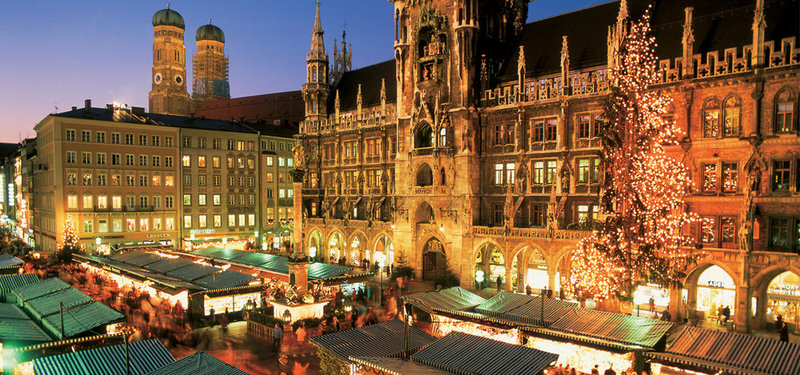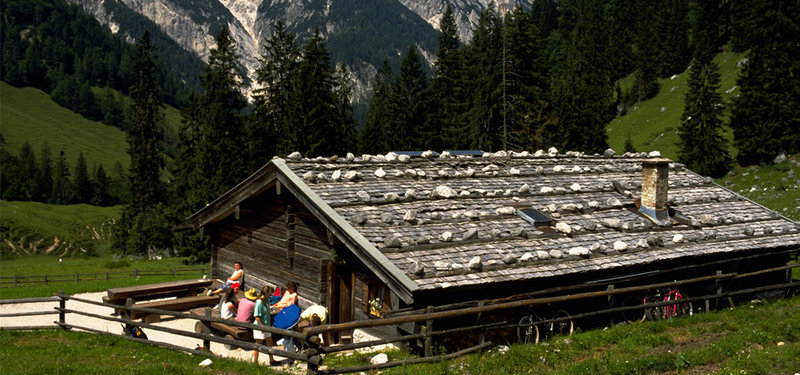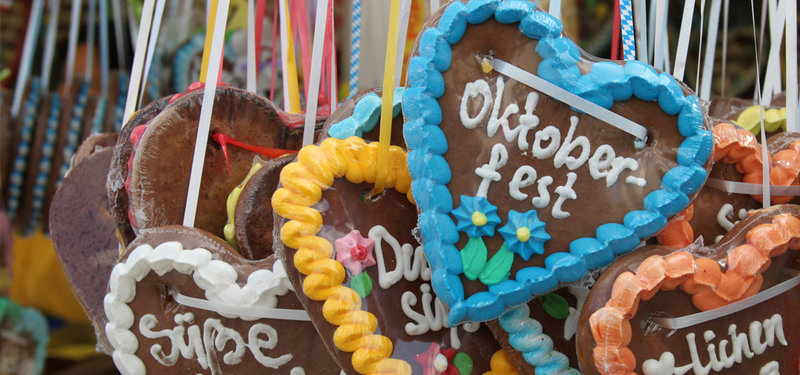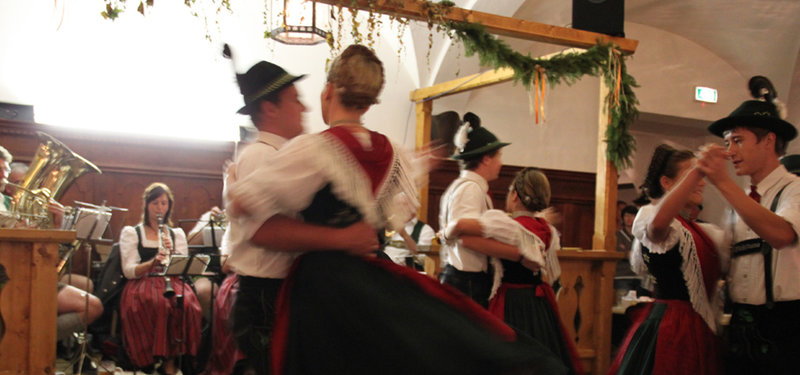The Reinheitsgebot
For beer aficionados, April 23 is a notable day: Tag des Bieres. This “Day of the beer” commemorates the anniversary of the Reinheitsgebot of 1516 which set down that beer can only consist of water, barley malt and hops. It inspired several of us to found a club: The Brotherhood for the International Embrace of the Reinheitsgebot. That’s B.I.E.R. for short.
The Reinheitsgebot
Is what we embrace
“Beer Makes it Possible”
Our motto is in place
We won’t drink mega-swill
That much is clear
Hops, Malt and Water
Will make a true beer
- From “Ode to the Beer Club” by Russell Spence
Most of my readers have likely heard of the Reinheitsgebot and recognize this as the world’s first food purity law. It was set down for all of Bavaria by Duke Albrecht the Wise in the city of Ingolstadt on April 23, 1516. (Albrecht, 2006). Many have written about its history and meaning, but I would like to offer some aspects that you may not be aware of:
There are exceptions to the German Reinheitsgebot
There are several old traditional beer styles, such as Berliner Weisse (lactic acid fermentation) or Leipziger Gose (salt, coriander). And there are some legally disputed, economically justified exemptions like asparagus or cherry beer). However, there are no exceptions like this allowed in the state of Bavaria. For example, the Köstritzer brand was allowed to bring a Witbier onto the market in Thuringia, whereas Christian Hans Müller was prohibited from doing the same in neighboring Bavaria. (Rieber, 2019)
There is more than one Reinheitsgebot: Bavarian vs. German
It wasn’t until June 3, 1906 when all the Kaiser’s lands “essentially” adopted the Reinheitsgebot, but there were allowances for sugar and special beers like Berliner Weisse and Gose. In the time of the Weimar Republic reverted to its own, stricter version. (Private Brauereien Deutschland e.V., 2020)
Historically, therefore, it is a wrong to refer to the German Purity Law of 1516. A “German” version simply did not exist back then, even though this identifier can be found on many German ale and lager labels today. (Dornbusch & Heyse, 2011)
The German version is more lenient when it comes to bottom-fermented beers. These may be made with the addition of “technically pure cane sugar, beet sugar, invert sugar, and modified starch sugar, as well as coloring agents made from these sugars. (Dornbusch & Heyse, 2011)
German brewers—including in Bavaria—that fail to adhere to the Purity Law may sell their beverages but may not call them “beer.” In 1987, however, the European Court dealt a serious blow to that reading of the Reinheitsgebot, when it ruled that the law amounted to an inadmissible restriction of free trade against beers brewed in the rest of Europe. Non-German brewers, therefore, were allowed, henceforth, to sell even non-Reinheitsgebot brews into Germany and call them “beer,” while German brewers, under their domestic law, were still compelled to follow the Reinheitsgebot when brewing beers destined for their own market. But German brewers were now allowed to depart from the restrictions of the German Purity Law when making beers for export…except in Bavaria, where brewers still had to adhere to the Bavarian version of the law, no matter what. (Dornbusch & Heyse, 2011)
You can make beer cheaper
By using an adjunct
Will people stop drinking it
Just because it’s junked?
The Reinheitsgebot, by Russell Spence
“Brewed according to the Bavarian Reinheitsgebot” – Does this ensure quality?
In some ways it does ensure quality, but it doesn’t guarantee that one beer will taste better to you than another beer.
Since Germans sometimes refer to their beer as flüssiges Brot (liquid bread), consider this analogy: Would you rather eat bread from the corner bakery or pick up a package of industrially produced bread at the supermarket? Would it be the one made with just flour, yeast, salt, water or an industrial Wonder Bread:
Unbleached enriched flour (wheat flour, malted barley flour, niacin, reduced iron, thiamin mononitrate, riboflavin, folic acid), water, high fructose corn syrup, yeast, calcium carbonate, soybean oil, wheat gluten, salt, dough conditioners, sodium stearoyl lactylate, calcium stearoyl lactylate, monoglycerides, mono- and diglycerides, distilled monoglycerides, calcium peroxide, calcium iodate, datem, ethoxylated mono- and diglycerides, enzymes, ascorbic acid), vinegar, monocalcium phosphate, yeast extract, modified corn starch, sucrose, sugar, soy lecithin, cholecalciferol (vitamin d3), soy flour, ammonium sulfate, calcium sulfate, & calcium propionate.
In non-Reinheitsgebot beer, there are more than 50 allowable additives and preservatives: antioxidants, foam enhancers, colorings, flavorings, ascorbic acid, polyvinylpyrrolidone, algae such as alginate, Irish moss, Isinglass for clarity, and enzymes like aspergillus oryzae, papain, propylene glycol, sodium bisulfite, Benzaldehyde, ethyl acetate, and food coloring (Kunze, 2011) and (Catchpole, 2006)
Mega-swill beers are made
With rice and corn
But, is this any way
For a good beer to be born?
The Reinheitsgebot says you
Must use a basic ingredient
If it’s not hops or barley
Then your beer won’t be needing it.
The Reinheitsgebot, by Russell Spence
On top of that, it’s not just barley, but adjuncts like corn, rice, and other sugars are employed. This may be because it’s cheaper, or it may be that the brewer is looking to impact some other quality of his or her beer, i.e. color, flavor or foam. (Bamforth, 2011) And, on the topic of malt, German brewers do not use any genetically modified ingredients. (Deutschen Brauer-Bund, 2004)
Because the beauty of the Reinheitsgebot
Doesn’t live in the past
It lives here today
And it’s right here in your glass!
The Reinheitsgebot, by Russell Spence
I certainly can appreciate non-Reinheitsgebot beer as well. When I am away from Bavaria, I always want to get beer from the local brewery. Fresher is better! And if you decide to toss some blueberries into your beer, I have nothing against it. But I probably won’t drink it. Sorry.
More info:
Yeast: Yeast was added later. In 1516 it was viewed as a catalyst and not an ingredient. (Gretzschel, 2015)
History: If you do want to read more about the actual history of the law, I recommend this one in English: https://www.reinheitsgebot.de/en/home/the-reinheitsgebot/
Wheat: In many ways, the Reinheitsgebot was an anti-wheat beer law and the Degenberg noble faily had the sole right to brew the top-fermented Weissbier. (Bayerischer Brauerbund e.V., 2020), (Gretzschel, 2015) and (Dornbusch H. D., 1997)
More fun:
Oansono is a Bavarian band that wrote a song titled, 500 Jahr, to commemorate the 500th anniversary of the Reinheitsgebot in 2016. Here is the text with my English translation. Just for fun, toss that Bavarian dialect into Google Translate and look at the gibberish that comes out! You can find the video on YouTube here.
Bavarian | English |
Liabe Leid auf deara Wäit griaß God, griaß God Mia san de Erfinder vom Reinheitsgebot Wasser, Hopfen, Gerste is as beste geger’n Durscht Und wenn da Wäitmarkt wos ander’s wui is uns des Wurscht | Dear people of the world, Grüß Gott, Grüß Gott We are the inventors of the Reinheitsgebot Water, Hops, Barley is the best solution against thirst. And if the world market wants something else, we don’t care. |
|
|
Refrain: Wei Mia san Mia und hom as beste Bier Seit 500 Johr schmeckt’s uns wunderbor A wenn a jeda oschafft wos ma macha soin Mia san mia, und lebm wia ma woin | `Cause we are who we are and we have the best beer. For 500 Years it’s tasted great to us. And if somebody tells us what to do We are who we are and live the way we want |
|
|
Liabe Historiker griaß God, griaß God Mia kenna de G’schicht vom Reinheitsgebot 1516 is in Bayern eigfiart worn Zum Schutz uns’rer Märkte vor Importe aus’m Norden | Dear historians, Grüß Gott, Grüß Gott We know the history of the Reinheistgebot In 1516 enacted in Bavaria to protect Our market from imports from the north |
|
|
Am Rhein und in Nordeutschland ham’s Kräuterbier gebraut De bayerischen Brauer worn do d’rüber ned erbaut Des Gseff aus’m Ausland hod de Umsätze bedroht Da war da beste Ausweg unser Reinheitsgebot | On the Rhine and in North Germany, they were brewing herbal beer The Bavarian brewers were into that and the crap from abroad was threating sales. The best way out was our Reinheitsgebot
|
|
|
Refrain: Wei Mia san Mia… |
|
|
|
iabe Weißbiertrinker, griaß God, griaß God Wos ihr do saufts des foit ned unters Reinheitsgebot Wasser, Hopfen, Gerste, is der gebotne Mix Vo Weizen oder Weizenmoiz steht do fei nix | Dear Weissbier drinker, , Grüß Gott, Grüß Gott What y’all are guzzling doesn’t come under the Reinheitsgebot Water, Hops, Barley malt is the recommended mix From Wheat or Wheat malt, is says nothing |
|
|
|
|
Refrain: Wei Mia san mia… |
|
|
|
Liabe EU griaß God, griaß God Du host as obg’schafft unser Reinheitsgebot Glühbirnen und Staubauger host uns reguliert Aber wos ma saffa hod di net intressiert | Dear EU (European Union) Grüß Gott, Grüß Gott. You've managed to regulate our light bulbs and vacuum cleaners, but what we drink hasn't interested you. |
|
|
Seit mittlerweile 30 Johr is ez erlaubt, Bananenbier aus Übersee mit vui Chemie gebraut Trotzdem wead bei uns des Zeig ned vakauft Weil ganzn Schmarn einfach koana sauft | Since about 30 years, it’s now allowed, Banana beer from overseas brewed with lots of chemistry. Despite that this junk isn’t sold While this foolishness simply no one will drink. |
|
|
Wei Mia san mia… |
|
Bibliography
Albrecht, G. (2006). Königliche Braukunst: Die Wittelsbacher und das Bier. Rosenhem: Rosenheimer Verlagshaus GmbH & Co. KG.
Bamforth, C. W. (2011). Adjuncts. In G. Oliver, The Oxford Companion to Beer (S. 11-13). New York: Oxford University Press.
Bayerischer Brauerbund e.V. (22. April 2020). Geschichte des Weißbieres. Von www.bayerisches-bier.de: www.bayerisches-bier.de/bier-wissen/geschichte-des-weisbieres/ abgerufen
Catchpole, A. (4. May 2006). What's really in your pint? Von The Guardian: www.theguardian.com/news/2006/may/04/food.foodanddrink abgerufen
Deutschen Brauer-Bund. (August 2004). Keine Gentechnik für deutsches Bier! Von www.bayerisches-bier.de: www.bayerisches-bier.de/wp-content/uploads/2012/03/Stellungnahme-DBB-zu-Gentechnik.pdf abgerufen
Dornbusch, H. D. (1997). Prost! The Story of German Beer. Boulder, CO: Siris Books.
Dornbusch, H., & Heyse, K.-U. (2011). Reinheitsgebot. In G. Oliver, The Oxford Companion to Beer (S. 692-693). New York: Oxford University Press.
Gretzschel, M. (Spring 2015). Das Reinheitsgebot ist tot –. Von Brau Magazin: braumagazin.de/article/reinheitsgebot-ist-tot/ abgerufen
Kunze, W. (2011). Additives. In G. Oliver, The Oxford Companion to Beer (pp. 9-11). New York: Oxford University Press.
Private Brauereien Deutschland e.V. (20. April 2020). Was ist das Reinheitsgebot von 1516. Von www.private-brauereien.de: www.private-brauereien.de/de/reinheitsgebot/was-ist-das-reinheitsgebot-von-1516/index.php abgerufen
Rieber, B. (23. April 2019). Reinheitsgebot: 13 Irrtümer. Von www.beerkeeper.net: www.beerkeeper.net/reinheitsgebot-13-irrtuemer/ abgerufen


















